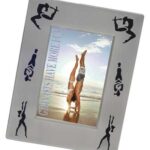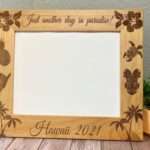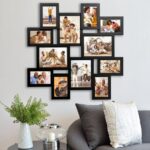I. Understanding Upcycling: What is It and Why Upcycle a Table Top?
II. Creative Techniques for Upcycling Your Table Top
III. Essential Tools and Materials for a Successful Upcycle Project
Understanding Upcycling: What is It and Why Upcycle a Table Top?
Have you ever stumbled across a worn-out table that has seen better days but can’t quite bring yourself to toss it out? That’s where the magic of upcycling comes in! Upcycling is all about transforming something old and potentially forgotten into something new and beautiful. It’s a fantastic way to breathe fresh life into items that might otherwise end up in a landfill, all while expressing your creativity.
So, What Exactly is Upcycling?
At its core, upcycling is the process of taking items that are no longer serving their original purpose and turning them into something more valuable or useful. Think of it as a step up from recycling. Instead of breaking down materials to create something new, upcycling preserves the integrity of the original item while giving it a fresh twist.
Imagine turning an old wooden table top into a stunning piece of decor that’s not only functional but also tells a story. That’s the beauty of upcycling! It combines creativity with sustainability, allowing you to be environmentally conscious while also showcasing your unique style.
Why Upcycle a Table Top?
Now, you might be wondering, “Why should I bother upcycling a table top?” There are several compelling reasons to consider:
- Sustainability: By upcycling, you’re reducing waste and minimizing your environmental impact. It’s a great way to contribute to a greener planet.
- Cost-Effectiveness: Instead of shelling out money for new furniture, upcycling gives you the chance to create something beautiful without breaking the bank. It’s often cheaper than buying new!
- Personalization: An upcycled table top allows you to tailor the design to fit your home’s aesthetic perfectly. Whether you prefer rustic charm or modern flair, the possibilities are endless.
- Creativity: Upcycling encourages you to unleash your creative side. It’s a fantastic way to experiment with colors, textures, and techniques while making something truly one-of-a-kind.
- Sentimental Value: If the table has been in your family for years or holds special memories, upcycling it can help preserve those sentiments while giving it a new lease on life.
Getting Started
Ready to take the plunge? Upcycling a table top is an exciting journey that allows you to express yourself while being kind to the planet. Before diving in, take a moment to assess the table top you want to work with. Check for structural integrity and think about the style you envision. Maybe you see it as a chic coffee table or perhaps a vibrant art piece for your wall.
In summary, upcycling isn’t just a trend; it’s a lifestyle choice that promotes creativity, sustainability, and individuality. So the next time you come across an old table top, consider the endless possibilities. Let your imagination roam free, and who knows? You might just create the centerpiece of your home!
Creative Techniques for Upcycling Your Table Top
Upcycling your tabletop is a fantastic way to breathe new life into something that might otherwise end up in the landfill. Whether you have an old wooden table, a vintage piece with character, or even a simple laminate surface, the possibilities are endless! Let’s dive into some creative techniques that can transform your tabletop into a stunning statement piece.
1. Resurfacing with Paint
One of the easiest and most affordable ways to update your tabletop is by giving it a fresh coat of paint. Here are a few tips to consider:
- Choose the Right Paint: Opt for chalk paint or acrylic paint, as they adhere well to various surfaces and give a beautiful finish.
- Prep the Surface: Clean the table thoroughly and sand it lightly to ensure the paint sticks well.
- Add a Sealer: Once dry, apply a clear sealant to protect the finish and make cleaning a breeze.
2. Decoupage Delight
If you love the idea of incorporating patterns and designs, decoupage is a playful technique you might enjoy!
- Gather Your Supplies: You will need mod podge, a brush, and decorative paper or fabric.
- Cut and Arrange: Cut your paper or fabric into desired shapes and arrange them on the tabletop without glue first to find the perfect layout.
- Paint and Seal: Apply a thin layer of mod podge to the back of your pieces, place them down, and then cover the entire surface with another coat of mod podge to seal it in.
3. Wood Staining for a Rustic Touch
If you want to keep the natural look of wood while enhancing its beauty, consider staining your tabletop!
- Select Your Stain: Choose a stain that complements your home’s décor—there are many shades available, from light to dark.
- Sand First: Sanding the surface will help to open the wood grain, allowing the stain to penetrate better.
- Apply Evenly: Use a cloth or brush to apply the stain evenly, and wipe away excess to achieve your desired depth of color.
- Finish with a Top Coat: After the stain dries, seal it with a polyurethane top coat for protection against scratches and spills.
4. Adding Texture with Fabric or Upholstery
For a unique and warm touch, consider adding fabric to your table. This works especially well for smaller tables or as a centerpiece:
- Choose Your Fabric: Opt for durable upholstery fabric that can withstand wear and tear.
- Attach Securely: Use spray adhesive or a staple gun to attach the fabric, ensuring it’s taut and smooth.
- Protect the Surface: Consider finishing with a clear acrylic coating to ensure longevity.
5. Enhancing with Mixed Media
Feeling particularly adventurous? Mixed media can incorporate various materials like metal, glass, or even mosaic tiles.
- Be Creative: Use old jewelry, broken tiles, or glass pieces to create a stunning mosaic tabletop.
- Secure with Adhesive: Make sure you use a strong adhesive suitable for the materials you’re using.
- Finish with Grout: If using tiles, grout between them for a polished look.
Remember, the key to a successful upcycle project is to have fun and let your creativity shine! Whether you choose to paint, decoupage, stain, or get adventurous with mixed media, your upcycled tabletop will be a true reflection of your unique style.
Essential Tools and Materials for a Successful Upcycle Project
So, you’re ready to embark on your table top upcycling adventure! That’s fantastic! But before you dive in, let’s chat about the essential tools and materials you’ll need to make this project a success. Whether you’re a seasoned DIYer or a newbie, having the right equipment can make all the difference. Here’s a handy list to get you started!
Tools You’ll Want on Hand
First, let’s talk about the tools you’ll need. Having the right tools makes the work easier and can lead to a more polished finish.
- Screwdriver: A good set of screwdrivers – both flathead and Phillips – will come in handy, especially if you need to disassemble any parts of your table.
- Saw: Depending on your design, you might need a hand saw or a circular saw to cut your table top down to size or to shape it into something unique.
- Sandpaper: This is essential for smoothing rough edges and prepping your surface for paint or stain. A range of grits – from coarse to fine – will give you flexibility.
- Paintbrushes and Rollers: Whether you’re applying paint, stain, or a protective finish, a good set of brushes and rollers will ensure a smooth application.
- Measuring Tape: Precise measurements are key in any DIY project. A measuring tape will help you to accurately size your materials.
- Level: If you want your table to sit evenly, a level is a must-have to ensure it’s perfectly balanced.
Materials to Consider
Now that you’ve got your tools, let’s move on to the materials you might need. Depending on the style you’re going for, your material choices will vary.
- Wood Stain or Paint: Choose a color that complements your space! Stains will enhance the natural grain, while paint can add a pop of color or a sleek finish.
- Sealer or Varnish: After staining or painting, sealing your table top will protect it from wear and tear. Look for water-resistant options for durability.
- Hardware (if needed): Don’t forget screws, brackets, or any decorative hardware you might want to use to add some flair or stability to your project.
- Fabric or Upholstery (optional): If you’re adding upholstered elements, choose a fabric that’s both stylish and easy to clean.
- Decoupage Materials (if you’re feeling crafty): Old magazines, scrapbook paper, or even fabric scraps can be used for decoupage to give your table top a unique flair.
Safety Gear is a Must
Before you start working on your upcycle project, don’t forget to prioritize safety! Here are a few essentials:
- Safety Goggles: Protect your eyes from dust and debris.
- Dust Mask: Especially when sanding or painting, a mask will help keep harmful particles out of your lungs.
- Gloves: Whether you’re handling chemicals or just want to keep your hands clean, a pair of gloves is a good idea.
And there you have it! With these tools and materials, you’re well on your way to creating a stunning upcycled table top. Remember, the most important part is to have fun and let your creativity shine through!










Comments